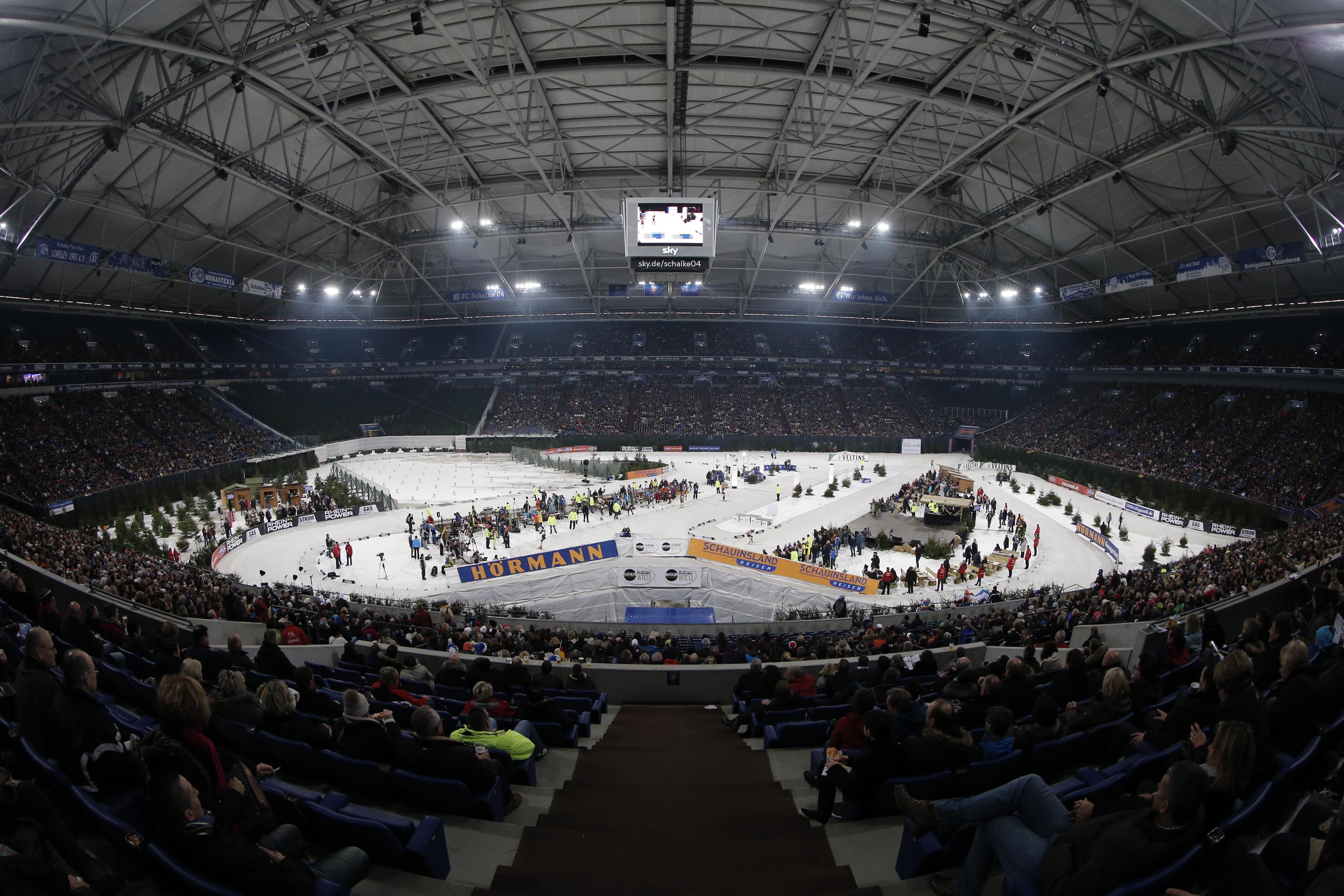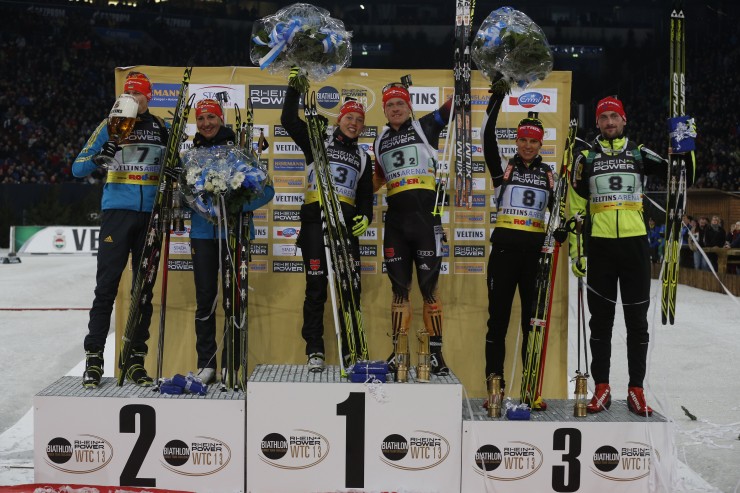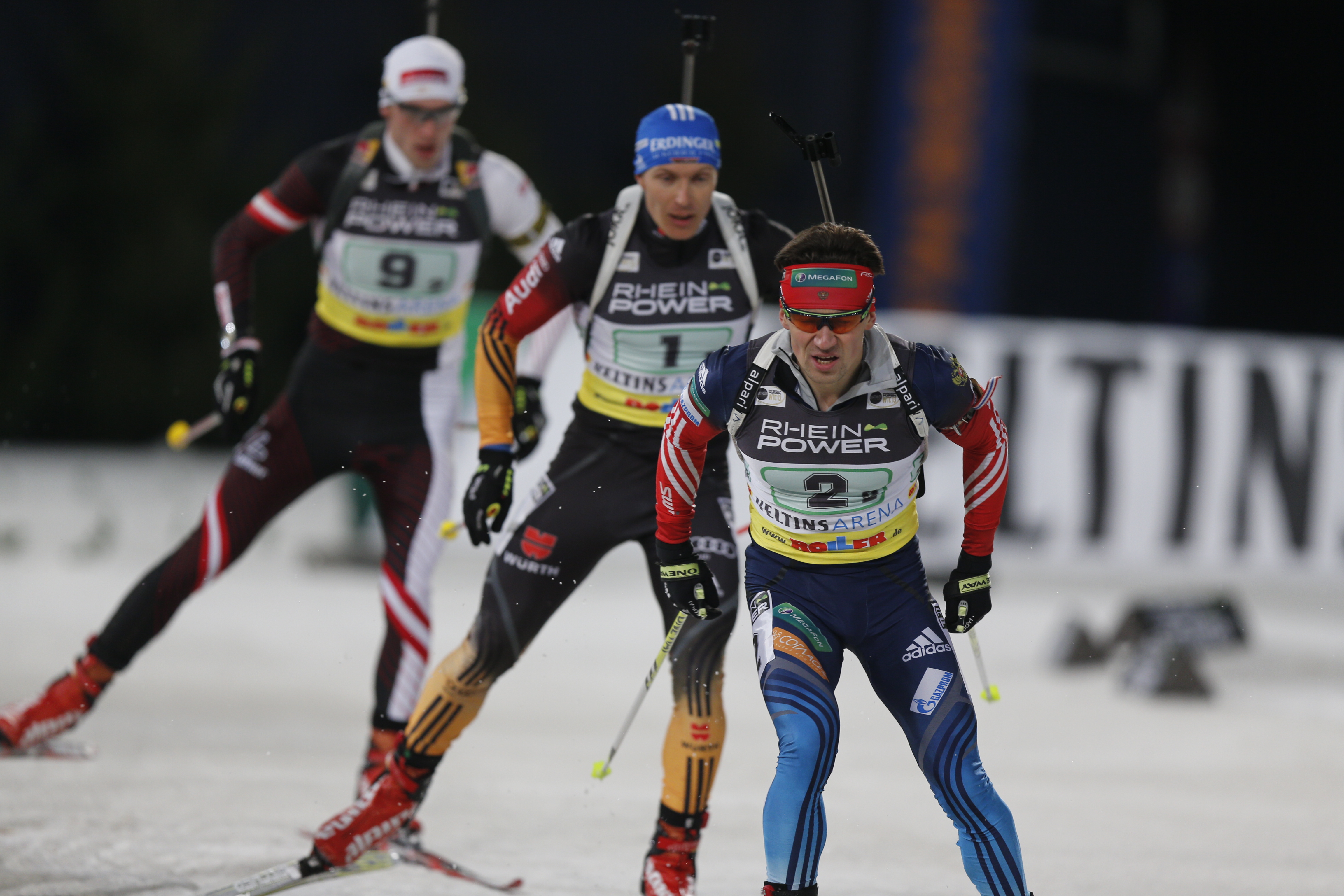
When the FIS Tour de Ski kicked off in Oberhof, Germany, on Saturday, it didn’t seem like much of a party. It was raining. There was so little snow that some athletes had been training on rollerskis. On a ribbon of white, skiers passed by green grass but also a lot of brown mud. The race course had little terrain, and was almost completely flat. Barely any spectators showed up.
That might be because they were all 3 1/2 hours away in Gelsenkirchen, with a roof over their heads. For the 12th year, the town of just over 250,000 people – which only has snow for about 15 days every year – hosted the biathlon World Team Challenge, where two-person teams of the best biathletes from the World Cup circuit compete in a relay race to the delight of tens of thousands of spectators.
How does the former coal-mining city, hit with some of the worst unemployment in Germany in recent decades, pull this off? The secret is an open mind and an innovative soccer stadium. Organizers truck in snow – 2,500 cubic meters, 10 truckloads of which were reportedly later taken to Oberhof – to the Veltins Arena, home of the city’s FC Schalke 04 soccer club, which reached the Champions League semifinals in 2011 (it’s also home to U.S. player Jermaine Jones). They build a few bridges so that the trail can loop over itself, and pop a shooting range in one corner, leaving that section of the stadium empty of spectators. Voila. Exciting biathlon racing, no weather required.

(Well, almost: in 2010, there was actually too much snow and the biathlon competition had to be canceled when the stadium’s roof collapsed.)
This year, 40,000 fans packed the stadium and roared in approval as Laura Dahlmeier and Florian Graf won the competition. It was the first time an all-German pair had won the World Team Challenge since Martina Beck and Michael Greis in 2002; back in 2009, Germany’s Kati Wilhelm paired up with Christoph Sumann of Austria for the win.
“That was amazing!” Dahlmeier, who had not competed at the event before, told the press after the races. “This is something I’ve never experienced.”
The day is a full schedule to biathlon, with junior races early in the day and senior races later. There’s also multiple competitions: a shoot-out, then a mass start and finally a pursuit, which determines the top honors. In both races, the women had four shooting bouts and the men five. The loop in between is approximately 1200 meters.
In the mass start, Graf had an exciting sprint finish against Emil Hegle Svendsen of Norway, a multiple-time World Champion who teamed up with countrymate Fanny Welle-Strand Horn.
In the pursuit, the Germans initially fell behind. Svendsen and Horn looked to be safe on their way to victory, with the Slovenian team of Teja Gregorin and Jakov Fak next in line. But Dahlmeier and Graf climbed their way back, as did Olena Pidhrushna and Andriy Deryzemlya of Ukraine. It came down to the last shooting stage, where Graf made up the 5-second gap to Ukraine. There was little room to pass on the narrow course, but Graf swooped in at the last minute, taking a stronger line than Deryzemlya through the last U-turn and sprinting past him to the finish. Deryzemlya took Ukraine to second place and Slovenia finished third.
It was an interesting victory for Germany, as the more veteran team of Andrea Henkel and Andreas Birnbacher finished further down the standings. Dahlmeier, last year’s World Junior Champion, has had a strong last year for the team, and is not the anchor of their women’s relay team, a role she has relished ad excelled in.
Graf, meanwhile, is still trying to get a top-15 on the World Cup this season to qualify him for the Olympics.
There was no American team in the competition this year, for the first time in several years. Last season, Tim Burke and Susan Dunklee placed 10th. Jay Hakkinen and the Barnes sisters have also competed at Schalke in the past.

Chelsea Little
Chelsea Little is FasterSkier's Editor-At-Large. A former racer at Ford Sayre, Dartmouth College and the Craftsbury Green Racing Project, she is a PhD candidate in aquatic ecology in the @Altermatt_lab at Eawag, the Swiss Federal Institute of Aquatic Science and Technology in Zurich, Switzerland. You can follow her on twitter @ChelskiLittle.



